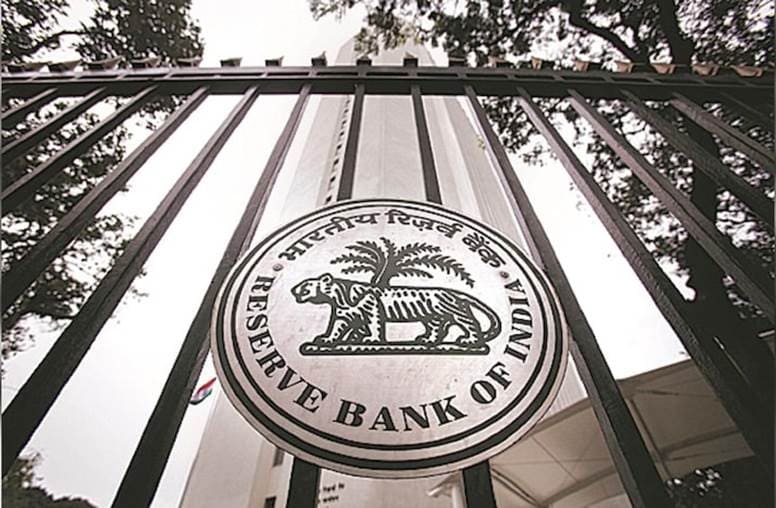This Week in Indian Finance: Key Developments in Investment Banking and Financial Analytics
India’s economic landscape is undergoing a series of fundamental shifts, driven by landmark policy choices, regulatory changes, and shifting investor attitudes. Within just the last week, there have been several significant developments that hold important ramifications for the nation’s future of finance. From a historical RBI surplus transfer to a new spurt of youth-driven mutual fund investments, all these have been reshaping the landscape aggressively for investment banking and analysis professionals.
For students who enroll in an investment banking course, the ability to understand such live transitions provides background information about what they are learning theoretically and creates ways for genuine financial knowledge. Similarly, they have an opportunity to learn evolving market dynamics through live information and regulatory processes.
Let’s analyze the top three developments this week that are currently reshaping India’s investment banking and financial analytics sector.
RBI’s Record Surplus Transfer – What It Means for the Economy

In a major announcement this week, the Reserve Bank of India (RBI) declared a record surplus transfer of ₹2.11 trillion to the Government of India for FY2024–25. This is the record transfer ever in RBI history, much higher than last year’s dividend payment of ₹87,416 crores. This was made possible due to the robust profits from investment in overseas assets for the central bank and a revamped Economic Capital Framework that raised the Contingent Risk Buffer (CRB) from 6% to 6.5%.
This surplus leaves the government with additional fiscal flexibility, around 0.2% of GDP, to increase capital outlays or reduce the fiscal deficit. It is also a sign of sound monetary management and macroeconomic resilience, further boosting investor confidence when the world outside is still uncertain.
For a student studying an investment banking course, this move emphasizes how central bank actions influence capital markets, bond yields, and lending by the government. For a student studying a financial analytics course, it demonstrates the spill over effect of macroeconomic decisions on forecast models, fiscal deficit tracking, and analysis of government expenditure.
Young India Fuels Mutual Fund Revolution

India’s fintech-driven investment wave is picking up steam, with increasing participation of millennial and Gen Z investors. This week, data released by the Association of Mutual Funds in India (AMFI) showed a steep rise in assets under management (AUM) of direct plans of mutual funds. These plans, which avoid distributor commissions, are gaining popularity for their cost savings and simple structure.
These platforms also democratized investment in mutual funds by offering app-based onboarding, algorithmic recommendations, and live portfolio tracking. The report said more and more investors below the age of 35 are turning to DIY investing through these direct platforms.
For the student of investment banking, this shift is a watershed moment in investor attitudes and finance democratization. A financial analytics course, similarly, gives one tools for breaking down and describing these trends, whether segmentation analytics, AUM growth modeling, or projecting investment behavior.
The rise of digital-first investing is not just a trend; it’s becoming the new normal. Understanding its mechanics is vital for future fund managers, wealth advisors, and data-driven financial strategists.
RBI’s Regulatory Crackdown: Penalties on Union Bank and Transactree Technologies
In yet another major update this week, the RBI fined Union Bank of India and Transactree Technologies for non-compliance with regulatory guidelines. The RBI did not mention any specific violations, but such fines usually relate to KYC shortfalls, weak internal controls, or governance failures in technology.
For banks, the cost of non-compliance extends beyond monetary fines, it undermines brand trust and raises operation risk flags. The crackdown is a nod to the way governance, risk, and compliance (GRC) frameworks are a must in ensuring financial system stability.
It’s particularly relevant to students of a financial analytics course, who are instructed to implement and engineer fraud detection systems, regulatory reporting systems, and AML analytics. To students of an investment banking course, it’s a real-life example of the function that due diligence and compliance analysis play in mergers, acquisitions, and capital raising.
As fintech technologies are growing at a rapid pace, regulatory needs are becoming stricter. Staying up to date on current compliance models is important to anyone who wants to enter the field of finance.
India’s First Corporate Bond Index Futures Contract Rolled Out

In a first last week, the National Stock Exchange (NSE) rolled out India’s first futures contract on a corporate bond index, which will revolutionize the game for debt market participants. The product is tied to the NSE CPSE Bond Plus SDL April 2025 50:50 Index of AAA-rated public sector undertaking bonds and state development loans. This move is expected to enhance liquidity in the bond markets, enable better price discovery, and promote risk management for institutional investors.
According to NSE’s official release, this futures contract will help hedge interest rate risks, thereby broadening the spectrum of debt instruments available for trading. It also aligns with SEBI’s broader goals of deepening India’s corporate bond market and bringing in more transparency and participation.
For investment banking students, this represents a significant step in the evolution of fixed-income markets, a field that had long been controlled by equities. An understanding of futures on bond indexes enables students to identify derivative trading, yield curve measurement, and portfolio hedging techniques.
Individuals pursuing a financial analytics course can gain significantly with this new development as it introduces a different perspective to credit risk modeling, index analysis, and macro-financial correlation studies. With bond markets being operational, technical professionals with proficiency in financial modeling and interpretation of data will be in great demand.
Bullish Momentum in Indian Equities: Domestic Institutions Outpace FPIs

India’s exchange has seen its fair share of bulls this week with benchmark indices such as Sensex and Nifty 50 hitting new highs. The real tale, however, is the sustained buying by Domestic Institutional Investors (DIIs), who have edged out Foreign Portfolio Investors (FPIs) as the market leaders.
According to Moneycontrol, DIIs have invested ₹1.2 lakh crore in domestic equities till date in 2025, whereas FPIs have put in ₹95,000 crores. This is a sign of a developed market wherein the locals are no longer trend followers but trend setters. Greater participation by mutual funds, insurance funds, and pension funds signifies that locals have greater confidence in local growth stories and greater financial literacy.
This is a critically relevant trend for students of investment banking programs since the capital raising scenario is moving increasingly towards domestic participants. It becomes necessary to be familiar with the actions and concerns of DIIs while performing IPO advisory, equity underwriting, and market-making functions.
For students studying for a course in financial analytics, such expansion creates prospects for jobs in sentiment analysis, buy-side research, and investment strategy modeling. DIIs’ expansion also means more demand for analysts who can analyze local economic indicators and assist institutions in managing their growing portfolios effectively.
Takeaways for Students and Professionals: Why These Trends Matter
What unfolded this week has a strong narrative of an Indian financial ecosystem transforming quickly. Students and future professionals in finance, and especially those looking at an investment banking course or financial analytics course, are reading about more than news of these happenings, they are real-time case studies with deep insights into financial systems, policy impacts, and market behavior.
Below are key takeaways:
Understanding Macro-Financial Interplay: The RBI’s record surplus transfer and its impact on fiscal policy highlight the essential relationship between central banking and government spending. Students can explore how such decisions influence sovereign bond yields, inflation expectations, and investment flows.
The glow of Retail and Digital-First Investing: Direct mutual fund plans have been growing as a reflection of the surging wave of investor independence and technology-based financial services. Knowing this trend in advance readies the next generation of financial advisors and analysts to work with a new, digitally inclined group of young investors.
The Necessity of Regulatory Pre-emption: With Union Bank and Transactree Technologies at risk of penalties, the importance of compliance, security, and risk management has never been more paramount. Students must be well-acquainted with KYC/AML procedures, regulatory analytics, and internal auditing systems.
Broadening Scope of Fixed-Income Markets: Launching the first-ever corporate bond index futures in India brings new learning into instruments in debt markets, hedging strategies, and index construction. This is immensely beneficial for the trading, portfolio management, and financial engineering activities.
Shifting Power to Local from Global: Since DIIs have surpassed FPIs in the Indian equity market, there is a need to understand domestic sentiment drivers, institutional investment approaches, and fund flow analysis. All these are the fundamental elements of equity research, fund management, and corporate advisory work.
By staying current with such events, students bridge the divide between theory in the classroom and practice in the market. The Boston Institute of Analytics’ investment banking and financial analytics program is designed to help students bridge the divide through industry-specific training, live case studies, and professional mentorship.
Conclusion: The Beat of Indian Finance Is Pulsating Stronger Than Ever
This week’s activities bear witness to the resilience and vibrancy of India’s financial sector. Whether the record RBI surplus transfer, empowerment of young investors, regulatory overreach, or innovation in new financial products, the Indian market is registering robust activity and deep structural change.
To finance professionals and students, especially those sharpening their skills with a financial analytics course, the lessons from this week are a reminder well-timed: financial success today is not so much about knowing the past anymore, it’s about reading the present and predicting the future.
By following such news regularly, students not only stay abreast of the developments but also learn to develop the analytical agility to respond to changes in the market, a hallmark of a successful career in investment banking, analytics, or financial planning.
Investment Banking Course in Mumbai | Investment Banking Course in Bengaluru | Investment Banking Course in Hyderabad | Investment Banking Course in Delhi | Investment Banking Course in Pune | Investment Banking Course in Kolkata | Investment Banking Course in Thane | Investment Banking Course in Chennai







